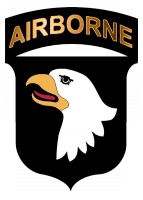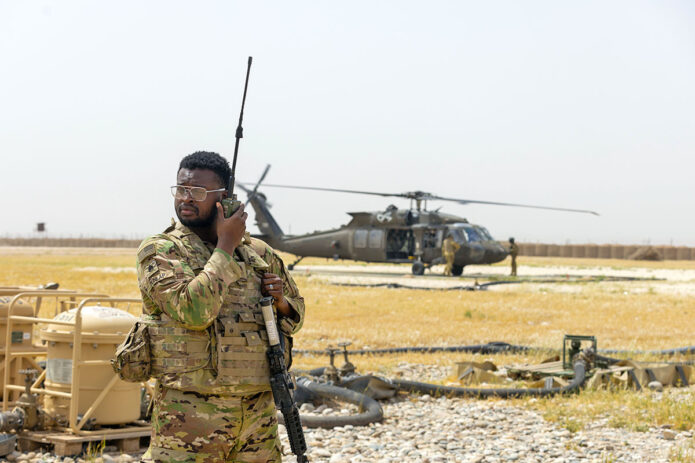 Rumalyn Landing Zone, Syria — In the dust-blown silence of Syria’s northeastern skies, the thunder of rotor blades breaks the calm as a UH-60M Black Hawk helicopter touches down at Rumalyn Landing Zone. Moments later, U.S. Army Soldiers assigned to Task Force Nighthawk, 101st Combat Aviation Brigade, 101st Airborne Division (Air Assault), leap into action—proving that even in the most remote corners of a combat zone, precision and coordination rule the air.
Rumalyn Landing Zone, Syria — In the dust-blown silence of Syria’s northeastern skies, the thunder of rotor blades breaks the calm as a UH-60M Black Hawk helicopter touches down at Rumalyn Landing Zone. Moments later, U.S. Army Soldiers assigned to Task Force Nighthawk, 101st Combat Aviation Brigade, 101st Airborne Division (Air Assault), leap into action—proving that even in the most remote corners of a combat zone, precision and coordination rule the air.
These Soldiers are not just flying helicopters—they’re orchestrating the complex ballet of air assault logistics. From the ground up, pathfinders and air traffic controllers are making it all happen with split-second timing and strategic foresight.
“Every landing zone has a heartbeat,” said one ATC specialist on-site. “And we’re the ones keeping the rhythm steady.”
Pathfinders, the elite scouts of the skies, are on the front line of this operation. Tasked with identifying, securing, and managing landing zones and drop zones, they ensure that every bird that lands does so safely and efficiently. Whether under threat of enemy fire or in rugged terrain, these Soldiers pave the way for air assault units to strike with speed and precision.
Once the aircraft is down, the mission doesn’t pause—it shifts gears. Crews execute field refueling operations with near-mechanical efficiency. A pressurized fuel line is connected to the Black Hawk’s intake port as Soldiers monitor fuel flow, pressure, and system integrity under unforgiving field conditions.

Meanwhile, air traffic controllers—often overlooked but vital—are guiding every movement through a tightly controlled airspace. With radios in hand and eyes on the skies, they provide real-time deconfliction, landing clearance, and airspace management to keep every aircraft and ground crew safe. In combat environments where seconds count and margins for error are razor-thin, their vigilance is the difference between success and disaster.
Together, these elements—pathfinders, controllers, and fueling teams—represent the full-spectrum capability of the 101st Combat Aviation Brigade’s aviation support. They don’t just fly helicopters—they sustain the mission, control the chaos, and keep the fight moving forward.
As the sun sets on another high-tempo day at Rumalyn Landing Zone, the crews of Task Force Nighthawk gear up for the next flight, the next insertion, the next challenge. In the skies above Syria, they are writing a new chapter in the long and storied legacy of the Screaming Eagles—one rotor rotation at a time.



